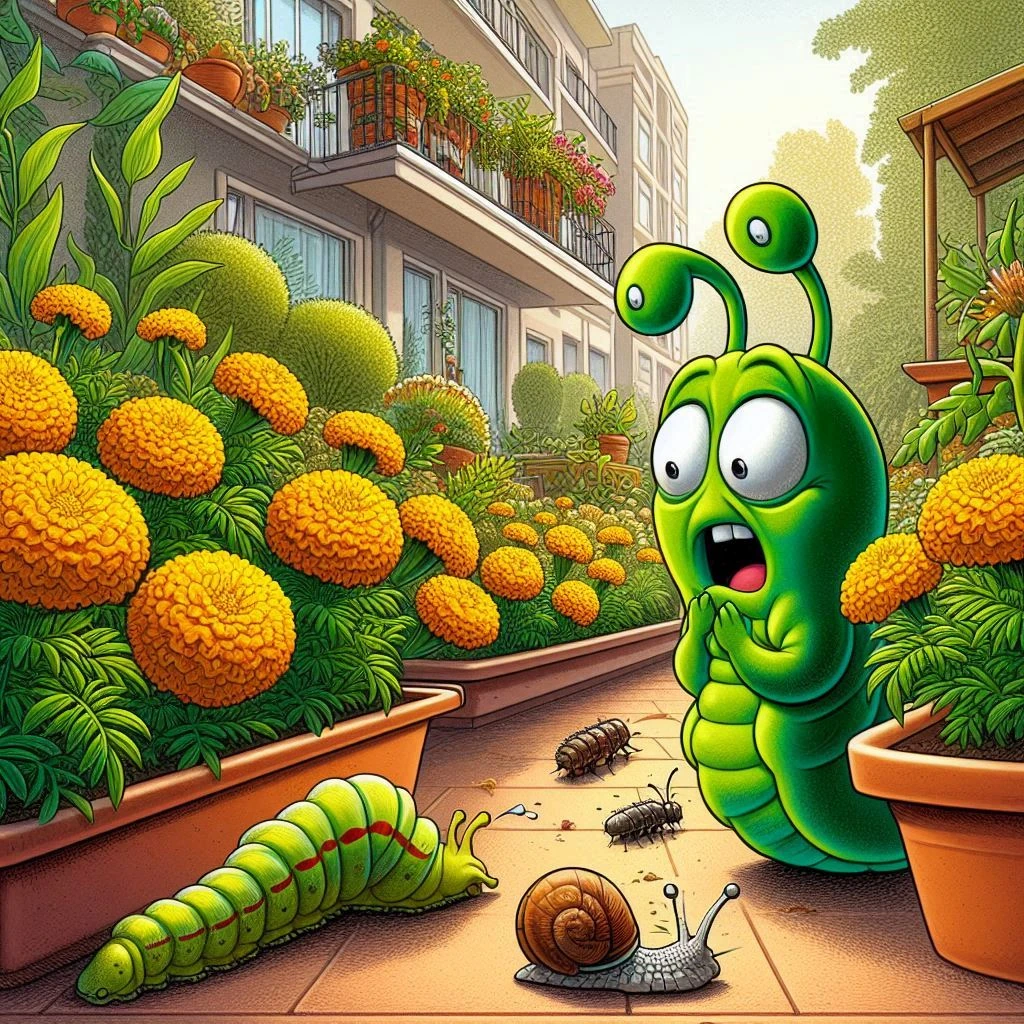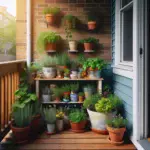Insects and rodents have been a huge health issue worldwide since… well, forever! Practicing natural pest control in urban areas is not just good for your home—it’s good for the planet too. 🌍
Here are some simple, effective ways to keep pests away without resorting to harsh chemicals or harmful poisons. 🌸🐜
🌼 Marigolds: Nature’s Colorful Shield
Planting marigolds in your garden does more than add beauty. Their strong scent repels pests like:
- 🦟 Mosquitoes
- 🐞 Aphids
- 🪱 Nematodes
Better yet, marigolds attract helpful pollinators like butterflies, supporting your garden’s ecosystem. Plant them near veggies like tomatoes and peppers for maximum benefit.
Bonus: These beautiful flowering plants will enhance the overall vitality of your garden. Make it a habit to dot your garden beds with marigolds each growing season and utilize these benefits to the fullest. Marigolds improve soil health by deterring root pests too. It’s a win-win!
🧄 Garlic Power: Aromatic Armor Against Pests
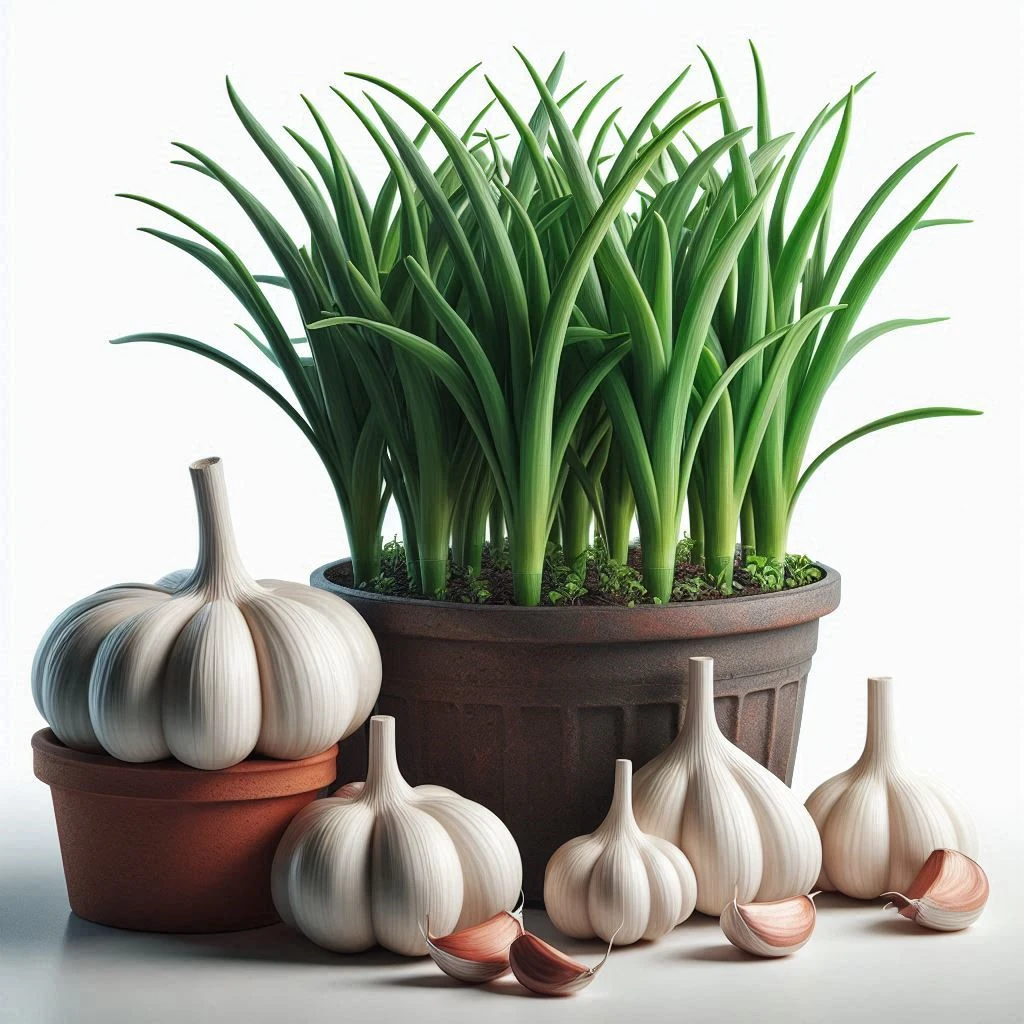
Garlic isn’t just for cooking—it’s a pest control powerhouse. Its potent scent wards off:
- 🐌 Slugs and snails
- 🪲 Beetles
- 🐜 Aphids
🌿 Planting Tips
Grow garlic around your leafy greens or brassicas to create a strong-smelling barrier. The trick is to place those bulbs close to your plants, making sure they get the full brunt of garlic’s pungent and protective power.
🧪 DIY Garlic Spray
- Crush several cloves
- Mix with water
- Spray on your plants’ leaves
It’s effective and completely natural—but be sure to reapply after rain. 🌧️
🪴 Try Container Garlic
Garlic grows well in pots and containers too. With good drainage and 7–10 inches of depth, you’ll have mobile defenders that also flavor your meals!
☕ Coffee Grounds: Reuse and Repel
Don’t toss those morning coffee grounds! Instead:
- Sprinkle a thin layer around your plants
- Repels 🐜 ants, 🐌 slugs, and 🐚 snails
- Feeds your soil with nitrogen, potassium, and phosphorus
🪱 Worm Bonus
Earthworms love coffee too, and they’ll keep your soil loose and rich. Ask a local café if they’ll save their grounds—waste not, want not!
🐞 Invite the Good Guys: Beneficial Bugs
Ladybugs, lacewings, and praying mantises are natural pest control heroes. Encourage them by planting:
- 🌼 Dill
- 🌿 Fennel
- 🌾 Yarrow
Avoid chemical pesticides—they kill helpful bugs, too. Instead, build a thriving ecosystem that balances itself naturally. Choosing natural pest management not only preserves your garden’s health but helps to maintain the insect balance. This balance is crucial for sustainability and can also brighten up your environment.
🏨 Bug Hotels
Insect hotels give your allies a place to stay, lay eggs, and survive the elements. Add a few around your garden to create a buzzing community.
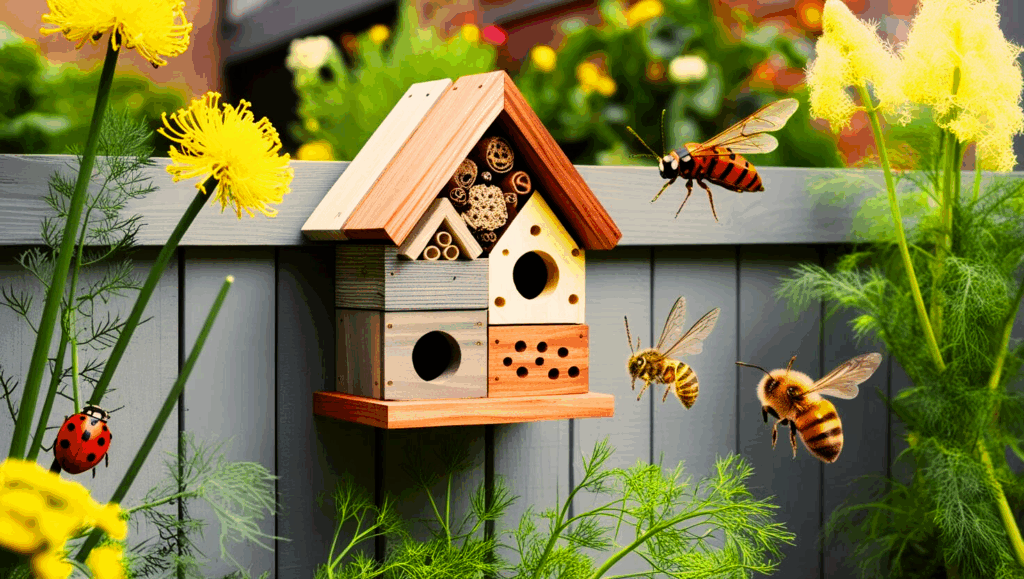
🌿 Aromatic Herbs: Mint, Basil & Friends
Strong-smelling herbs like mint and basil double as pest repellents.
🌱 Mint
Repels:
- 🐭 Rodents
- 🦟 Mosquitoes
- 🐜 Ants
Grow it in pots to control its invasive spread. Mint is the type of plant that can spread and take over its surroundings. Planting mint in pots will keep the mints invasive nature in check. Growing in containers will ensure that you have a movable army of pest deterrents at your disposal. Place these potted plants near doorways, garden paths, or seating areas for maximum effect.
🍃 Mint Spray
Make a mint tea spray by steeping fresh leaves in hot water for 15 minutes. Use to mist outdoor areas and repel flying insects.
🌿 Basil Bonus
Basil not only keeps mosquitoes away but also adds wonderful aroma near windows and seating areas. Swapping chemical repellents for plant-based solutions like mint and basil helps you keep pests away no doubt. But you are also building a garden environment that’s safe, sustainable, friendly and aromatic to everyone … except pests.
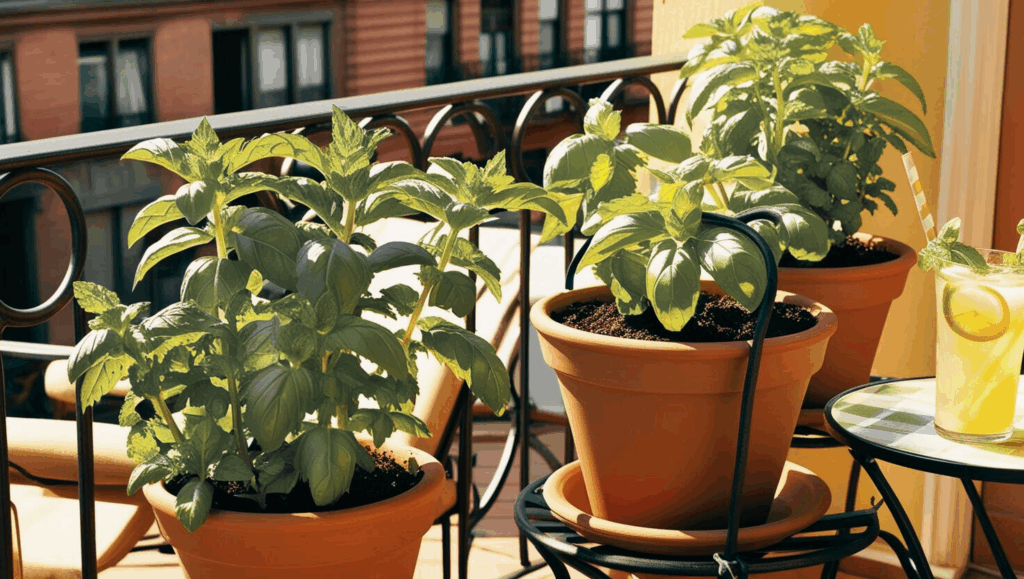
🛡️ Try Natural Repellents
For extra help, look into products like Repels-All from Gardener’s Supply Company. This natural deterrent targets multiple pests without harming them.
🏙️ Why Go Natural?
- ✅ Safer for families and pets
- ✅ Protects pollinators and beneficial insects
- ✅ Supports biodiversity and soil health
- ✅ Builds a stronger, more sustainable urban garden 🌇🌻
❓ FAQ: Natural Pest Control in Urban Gardens
A: Absolutely! All the suggestions here, especially garlic, mint, and marigolds, thrive in pots and container gardens.
A: After rain or heavy watering, reapply garlic or mint sprays every 5–7 days for best results.
A: They can be! While results may take longer, natural pest control will build a sustainable ecosystem over time.
📌 Final Thoughts
Natural pest control in urban areas doesn’t have to be complicated. By incorporating companion plants, reusing household items, and attracting helpful insects, you create a healthy garden ecosystem where everything works together.
Happy gardening—and pest-free planting! 🐝🌿


